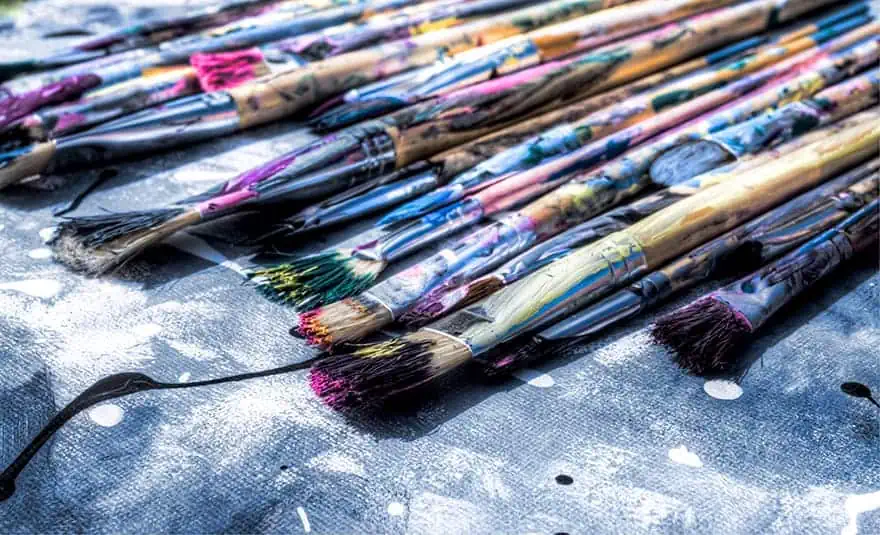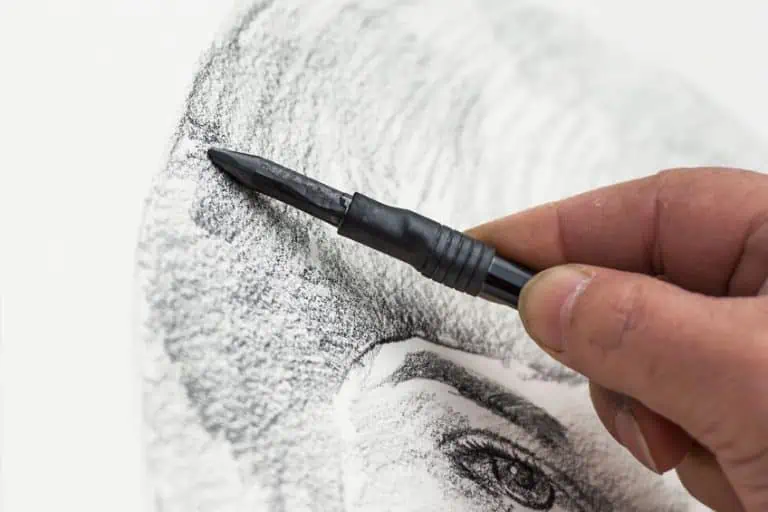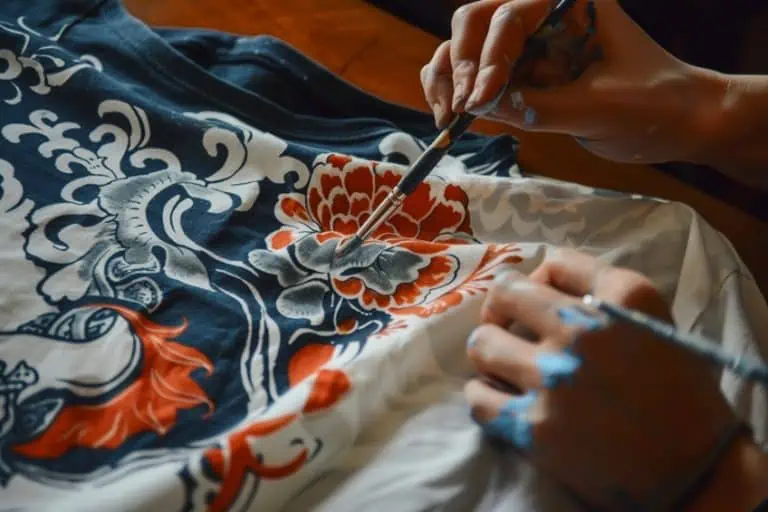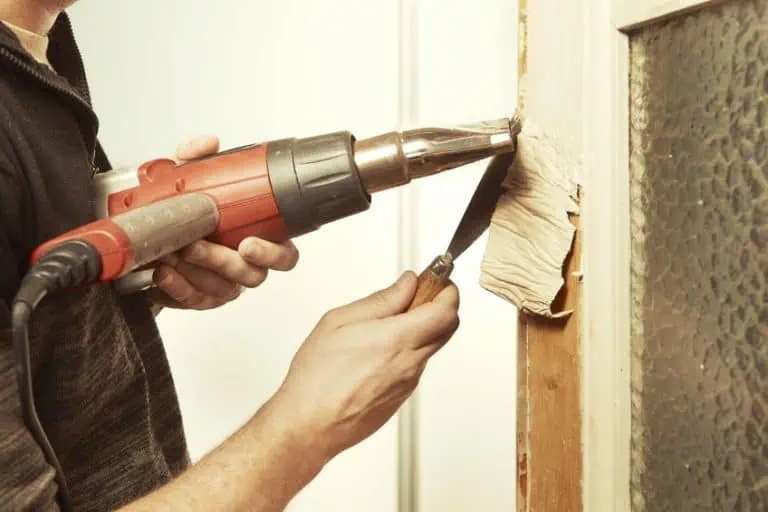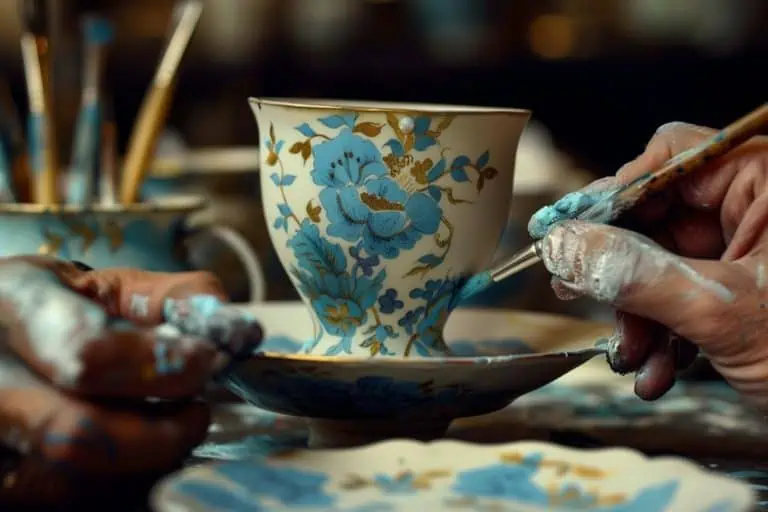How To Clean Acrylic Paint Brushes – Best Acrylic Brush Cleaner
This post may contain affiliate links. We may earn a small commission from purchases made through them, at no additional cost to you.
Every painter or artist knows the worst thing about cleaning up after painting is cleaning your paintbrushes. When using acrylic paint cleaning up can be very difficult as it dries so hard and just using water will not be sufficient in removing everything when cleaning acrylic paint brushes. Luckily for you, we are going to walk through some easy methods and tips so that you become an expert on how to clean acrylic paint brushes.
Table of Contents
Cleaning Acrylic Paint Brushes
When it comes to cleaning your paintbrushes, there are some helpful things to remember. the methods you choose will be based on your paintbrush type and paint medium. Below we are going to take a closer look at the paintbrushes we would use for acrylic paints and how to clean them.
Paintbrush Type
Paintbrushes come in different materials and bristles types. For instance, there are bristles specific to oil painting, watercolor painting, and of course acrylic painting. The two options of bristles are either natural hair or synthetic paintbrushes. Natural hair paintbrushes are made usually using hog, badger, or weasel hair. This is what makes natural paintbrushes coarser and firmer. Natural brushes are the best option to use for painting with chemical-based paints as they are more durable and are not sensitive to working with solvents in your clean-up process. The small grooves in the animal’s hair is what allows these bristles to hold and dispense a thicker load of paint than synthetic brushes would be able to.
Synthetic brushes are made with polyester or nylon. These have much softer bristles and when using them it is best to continuously rinse them while you work with your acrylic paints. This keeps them supple and in good condition for longer use. These bristles absorb more of the paint, making them more likely to stain. Thus, they are much harder to clean once the paint has dried.
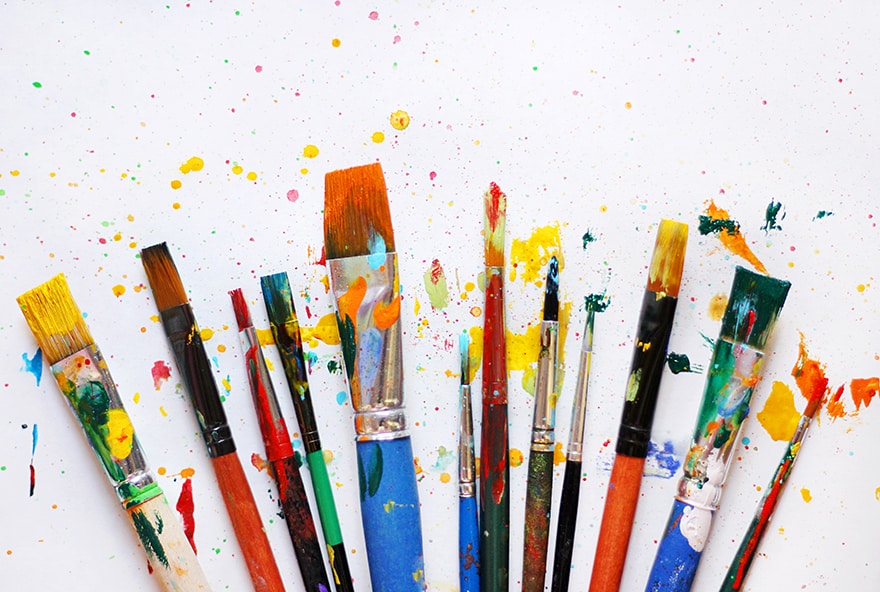
How to Pick Your Paintbrushes
Although natural brushes can be more expensive, they do have their advantages when working with certain mediums. Natural brushes can handle the use of chemicals, be it within your paint or in a painting medium. These brushes are best used with oils or watercolor paints as the bristles are more pliable. Acrylic paints can be used with natural paintbrushes too, although some say they are prone to be damaged.
Synthetic paintbrushes can be used with any paint really, but they are best known for use with either latex, acrylics, or water-based paint varieties. These paintbrushes have high absorption capabilities and provide a smoother finish with fewer brush strokes. Synthetic brushes are more cost-effective and they work well no matter your level of expertise.
Tips on Maintaining your Brushes
Now that we know the different brush types, we can go through some tips on how to keep them in the best condition to optimize your acrylic painting.
Storing Your Brushes
- The way you are storing your paintbrushes will affect their longevity and durability in the future.
- Paintbrushes should always be left lying down on a towel when they are drying. And upright or on their sides when being stored so the bristles are not being squashed or misshaped.
Trimming and Conditioning Your Bristles
- Trimming bristles is a good way to get the most out of your paintbrushes. Natural haired brushes often gain split ends on their bristles from general use and chemicals. This is an easy way to prevent further damage.
- Make sure to not cut too much off.
- Another way to add moisture and retain brush shape or even revive older brushes is to condition them. Using oil mediums or even a small amount of fabric softener will condition your bristles and keep them strong. Applying some hair gel can also have the same effect protecting your bristles and smoothing them out.
- Make sure to rinse your paintbrushes after applying these conditioning agents and wipe them down.
- If you would like to use a specialized product, there are brush conditioners and moisturizing soaps available on the market that are made specifically for acrylic paint cleaning up.
Washing Your Paintbrushes
- Cleaning up as soon as you are done painting will make things much easier.
- Leaving brushes to dry with paint still on them, will damage them and make future use much more difficult if not impossible.
Use Water While Painting
- Rinsing and wiping in between painting is a good way to get into a routine and preserve your brushes.
- This will also prevent paint buildup on your bristles which makes them harder to clean if left to dry.
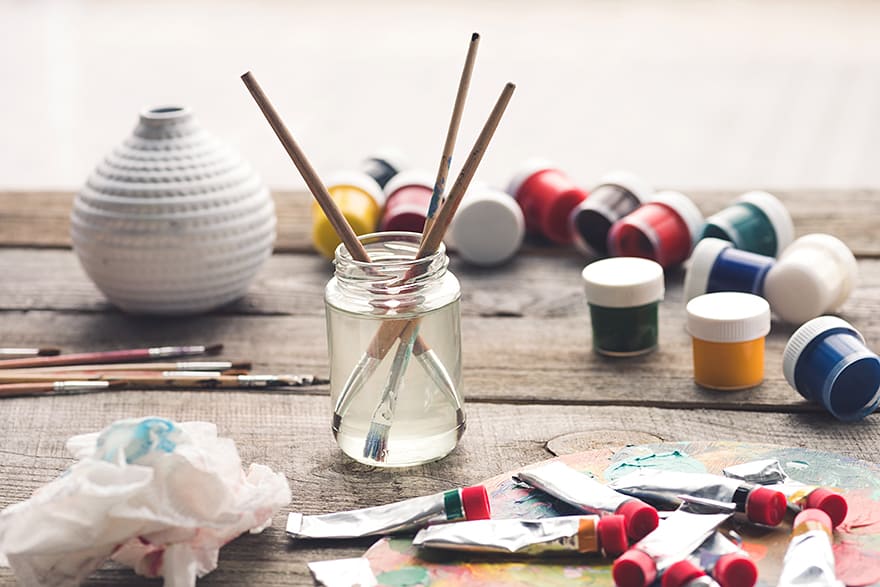
Check Your Brushes
- Just because you have gotten into a habit now of cleaning your paintbrushes, doesn’t mean there aren’t some forgotten dried-out ones that may need cleaning and possibly reviving.
- Going through your brushes monthly or even every few months will assist in better brush maintenance and care.
Do Not Soak Paintbrushes
- Leaving paintbrushes in water or other liquids for long periods, causes their bristles to move out of shape or worse damage your bristles or brush handles. This can be a problem when doing long paintings and working with different brush sizes or colors.
- Be sure to work with and clean each brush individually while painting, to avoid any problems.
Only Dip the Tip
- When painting it can be tempting to cover your entire paintbrush with paint. however, getting paint in your handle or ferrule is damaging for the brush itself as it is highly difficult to clean off.
- Dipping just above your hallway mark on your bristles is sufficient and will be much easier to remove when you are done.
Now that we know all about brushes and how to take care of them, let’s take a look below at some methods for cleaning acrylic paint brushes.
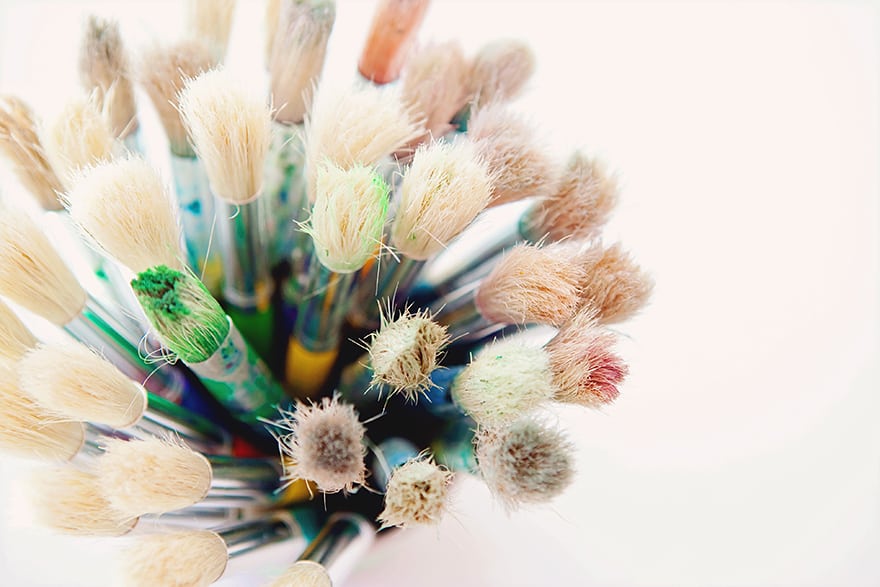
How to Clean Acrylic Paint Off Brushes
Before we look into some product recommendations, there are a few methods you can try at home for cleaning your acrylic paint brushes.
Cleaning Acrylic Brushes with Soap and Water
The best method to instill in your painting routine is constant cleaning while you paint. this means keeping a jar of water nearby and rinsing your brush when you are done with it or when you are done with color.
- Changing brushes for each color is another great way to ensure cleaner and longer-lasting brushes.
- When you are done painting, you need to rinse your paintbrushes under some running water. Do not use boiling or hot water, this will damage your bristles.
- Rubbing the bristles between your fingers while under the water will assist in releasing the paint caught in them.
- Once done, apply some form of soap or shampoo and continue rubbing that into your bristles. Make sure to get inside right at the center to effectively remove any paint that has dried there and cannot be seen.
- Now you can rinse again keep rubbing until your water runs clear.
- Gently dab your paintbrush bristles with some paper towel and leave to air dry properly.
Rubbing Alcohol to Clean Dried Acrylic Brushes
Rubbing alcohol or acetone, are probably the closest things one would have at home that would effectively work as a paint thinner. This method can be used for cleaning dried acrylic paintbrushes and oil brushes.
- For this method, you may want to consider working outside or in a ventilated area as these chemicals can have a very strong odor and be harmful to your health. Also, one should use gloves to protect their skin.
- In addition to your jar of water, you may want to have a jar with a small amount of rubbing alcohol or acetone on your desk as well. Both choices are great at stripping the paint from your bristles.
- Once done with your painting or a specific color, place your brush into the jar of alcohol and let it soak for a few minutes. Do not leave them for too long, although they can be used with these chemicals, if left unattended these chemicals will eat away at your brushes.
- Mix the paintbrushes around after a while, and then remove them from the jar and wipe them down with a paper towel until the color is gone.
- Remember this method cannot be used with synthetic paintbrushes, they will be damaged by the alcohol.
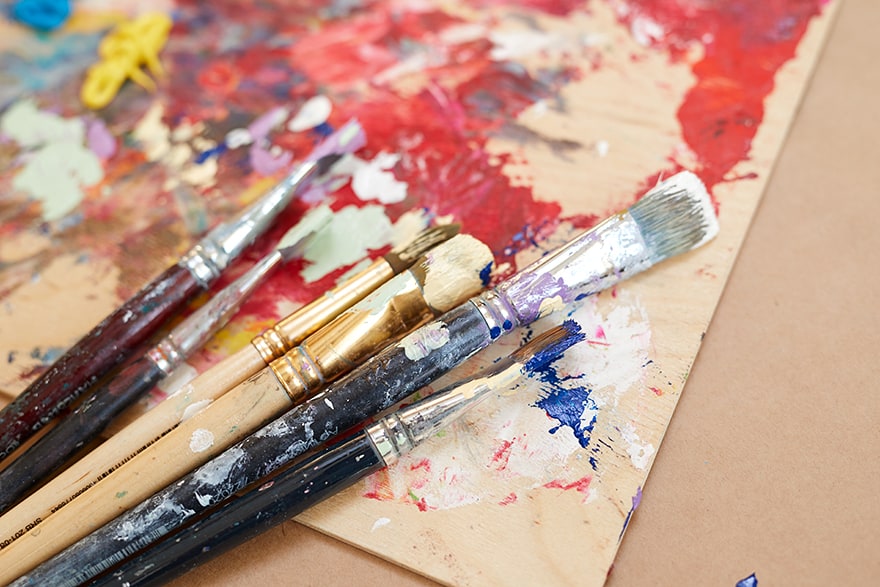
Cleaning Acrylic Brushes with Hand Sanitizing Gel
Considering our current world health epidemic, this is a brilliantly easy method as sanitizers are everywhere!
- The key ingredient in hand sanitizer is alcohol. Using a liquid sanitizer is perfect for removing acrylic paint from your paintbrushes.
- When using one with a gel consistency, placing some in your hand then rubbing it into your brush will loosen the paint within your bristles.
- Now use a paper towel to get rid of any excess and rinse your brush thoroughly before dabbing it dry again.
How to Clean Dried Acrylic Paint Off Brushes Using a Comb
The longer acrylic paints are left to dry, the harder they can be to clean up. That is where certain tools can come in handy.
- Using an old fine-tooth comb could be a game-changer when cleaning paintbrushes.
- Before you start scraping, apply a light coating of oil or water to your comb. Too much will saturate the bristles and make a mess. This will assist in releasing the paint from your bristles as well as ensuring your bristles are moisturized.
- Be sure to hold your paintbrush firmly by the base of your bristles to maintain control. Gently comb through the bristles and apply more oil or water if need be.
- Once you are done combing out all the dried pieces, wipe your paintbrush and rinse.
Acrylic Brush Cleaners
Now that we have covered some easy ways on how to clean dried acrylic paint off brushes, let’s take a look at some recommended product alternatives that are available.
Brush Cleaner and Restorer: WINSOR & NEWTON Brush Cleaner and Restorer
If you have been looking for how to clean dried acrylic paint brushes, then here is your answer. This product from Winsor & Newton can be used safely on both natural and synthetic hair paintbrushes without damaging them. not only to clean them but also to revive and condition them. Winsor &Newton brush cleaner and restorer is non-toxic and has a subtle odor compared to other products on the market. it also will not leave a residue on our paintbrushes when you are done cleaning them.
- Brush cleaner and restorer safely and easily cleans both natural and synthetic brushes without damage to brush heads
- Emits a low amount of Vapor and is non-toxic
- Biodegradable, water-soluble, non-flammable and non-abrasive
This product works best when your brushes are left to soak for a while, allowing the formula to work deep within the bristles. After about an hour you can safely remove them and wipe them down with a paper towel. Remember to run your paintbrushes under some eater and wipe them again just to remove any excess product. Never leave your brushes in these solutions for longer than the directions advise. This will damage them.
PROS
- Brush cleaner and restorer in one
- Works well to remove paint easily
- Works well at reviving old brushes
- Low odor and non-toxic
- Can be used with natural and synthetic hair bristles
- Only a small amount should be used at a time, so a little goes a long way
- Good value for money
CONS
- This solution will eat plastic brush handles
- It will damage brushes left unattended

Cleaning Dried Acrylic Paint: GENERAL PENCIL B&J The Masters Brush Cleaner
This brush cleaner works as soap and would be the second stage, after rinsing in your paintbrush cleaning process. It can be used with most paint mediums. Once you have rinsed and wiped your brushes down, wet them again, and then apply some of the Masters Brush Cleaning Soap to your bristles. This soap works by coating your bristles and conditioning them at the same time. The use of water activates the soap and allows it to work its way inside your paintbrush. Wetting it before and then leaving the soap to soak in a while, will provide the best results. Then you can rinse and rub your paintbrush under the tap and allow them to dry. This soap also works for restoring and reviving old or stained brushes.
- Keep brushes like New with this lemon-scented Cleaner and preserver
- Even Old, hardened, oil paint brushes may be restored to their original snap and luster
- Non-toxic water-soluble cleaning Compound works safely on oils, acrylics, or watercolors
PROS
- Easy to use
- Can be used with different mediums
- Gentle on brushes
- Restores and conditions old brushes
CONS
- Bigger tubs are pricey
There you have it, everything you need to know on how to clean acrylic paint off brushes. Whether you are using a brush cleaner or doing it at home we hope you now have a new respect for your brushes and will manage to take the best possible care of them.
Frequently Asked Questions
How To Clean Dried Acrylic Paint Brushes
There are a few ways to do this. The most effective solution for cleaning acrylic brushes is using a painting medium or brush cleaner. If you do not have one then using things like rubbing alcohol, acetone or even some soap and water would help.
What is The Best Acrylic Brush Cleaner?
When using acrylics the best thing to do is to clean as you go. Keeping some water or paint medium with you and using this when switching brushes will save you time and money on new brushes in the future. If you have left your acrylics to dry on your brushes, there are certain products you can use to remove them.
What Paintbrushes Work Best With Acrylics?
Natural haired paintbrushes and synthetic brushes work well with acrylic paints. Synthetic brushes are softer and can absorb more of the paint. While natural haired brushes are more resistant to chemicals and solvents if you choose to work with those while painting.
In 2005, Charlene completed her wellness degrees in therapeutic aromatherapy and reflexology at the International School of Reflexology and Meridian Therapy. She worked for a company offering corporate wellness programs for several years before opening her own therapy practice. In 2015, she was asked by a digital marketer friend to join her company as a content creator, and it was here that she discovered her enthusiasm for writing. Since entering the world of content creation, she has gained a lot of experience over the years writing about various topics such as beauty, health, wellness, travel, crafting, and much more. Due to various circumstances, she had to give up her therapy practice and now works as a freelance writer. Since she is a very creative person and as a balance to writing likes to be active in various areas of art and crafts, the activity at acrylgiessen.com is perfect for her to contribute their knowledge and experience in various creative topics.
Learn more about Charlene Lewis and about us.
